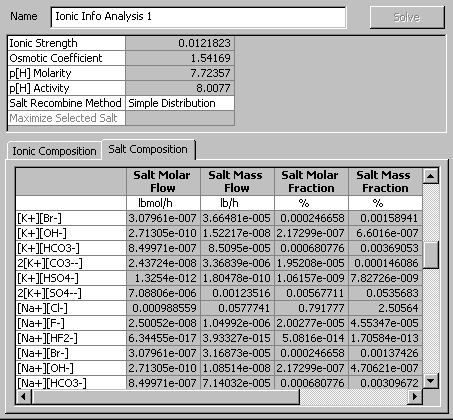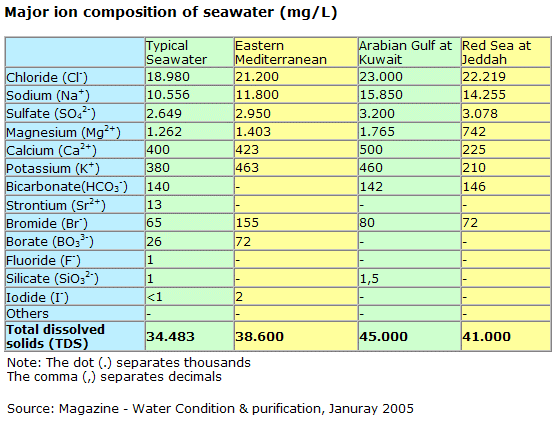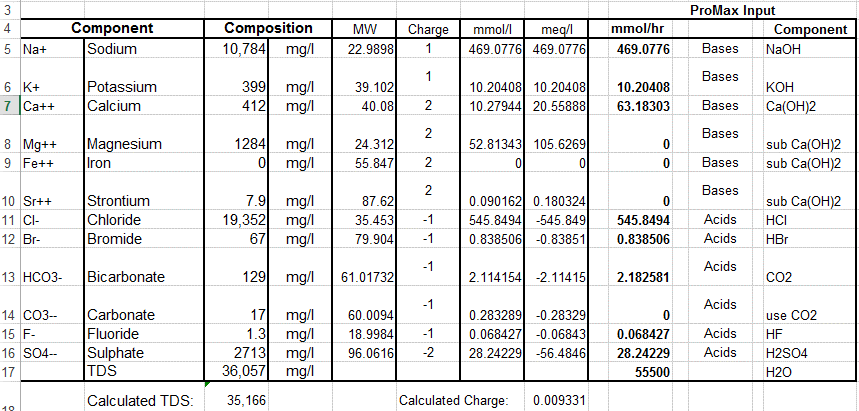Modeling Seawater in ProMax
Lili Lyddon
June 14, 2013
To model a brine solution in ProMax, the acids and bases comprising the salts must be entered along with water, and the Electrolytic ELR property package must be used. In the Electrolytic Property Packages the acids and bases dissociate to form the ionic species, and the salt concentration can be viewed by adding an Ionic Info Analysis to the aqueous liquid stream and looking at the Salt Composition tab:

Seawater composition is sometimes provided as the ionic species rather than the actual salts as shown below:

The composition in an analysis is commonly provided in mg/liter of ionic species, but because the seawater ionic composition is actually based on salt rather than acid/base reaction, the number of moles of the compound providing the ions should be input instead of the mass flow. To convert the seawater composition in mg/l to moles of the acid or base to be input into the ProMax composition dialog, you can do the following in a spreadsheet to convert compositions in mg/l to mmol/hr:
- Enter compositions in mg/l. If your composition is already given in mol/kg, you can simply multiply the values by 1000 to get the mmol/l (skip #2).
- Divide compositions in mg/l by the molecular weight to get the mmol/l
- Use this value for mmol/l as the composition input for mmol/hr. If you assume water is 1e^6 mg/l, divide by the molecular weight of water to get 55,500 mmol/hr.
- As a check, you can multiply the mmol/l by the charge to get the meq/l. The total should be close to 0.
- Enter the components as shown. Be sure you are using the Electrolytic ELR Property Package. In the 3.2 version of ProMax Mg(OH)2 is not available, so the composition can be lumped with the Ca(OH)2. The same goes for Iron and Strontium, if present. Beginning with the not-yet-released 4.0 version of ProMax, Mg(OH)2 is included in the component database.
- If a value is given for TDS (Total Dissolved Solids) you can compare that with the reported total of the ionic species reported.

You can also check the pH in the Ionic Info analysis, and adjust the composition if necessary to get the desired pH.
Some references for seawater composition can be found at the following links or by googling “seawater composition”:
http://en.wikipedia.org/wiki/seawater
http://cdiac.esd.ornl.gov/ftp/cdiac74/chapter5.pdf